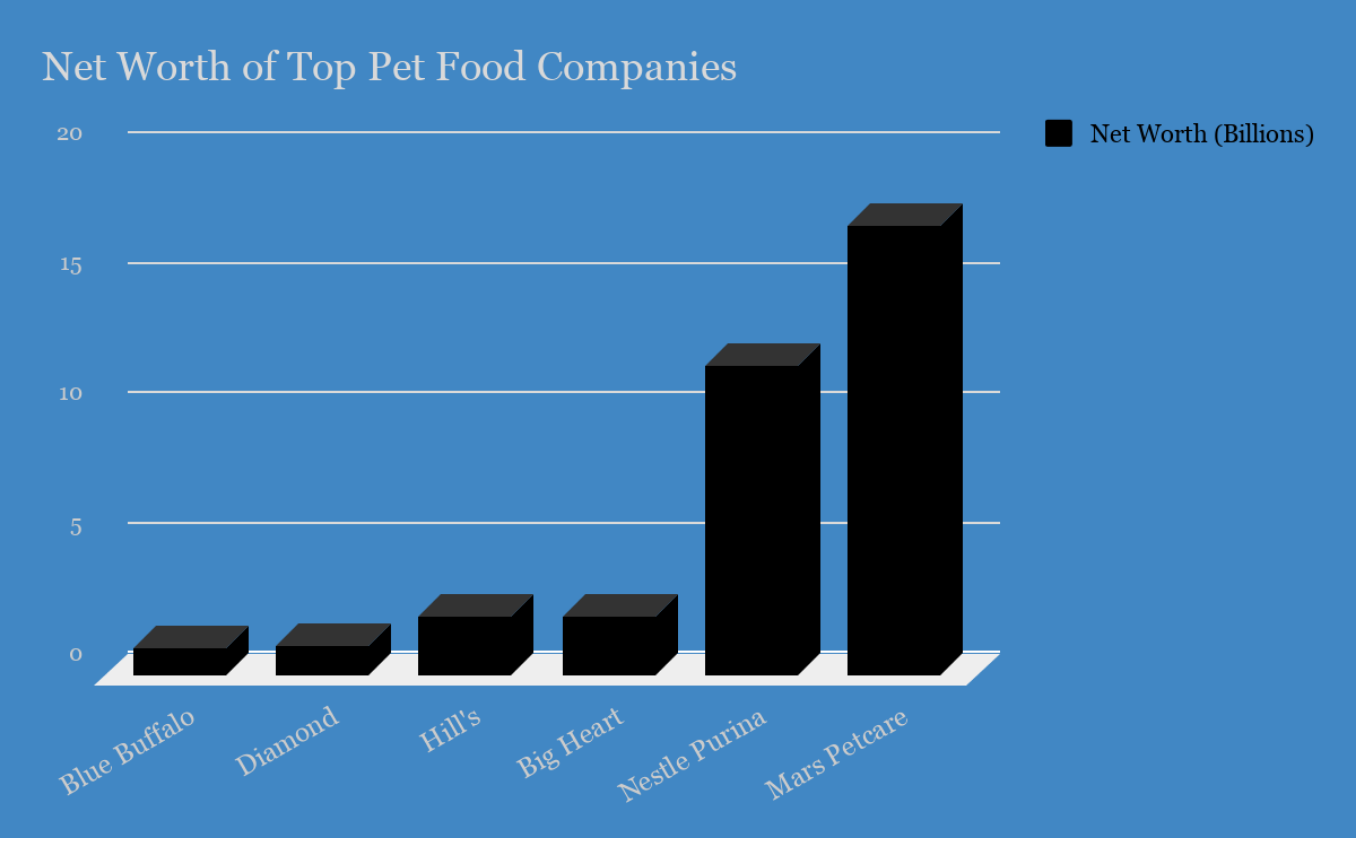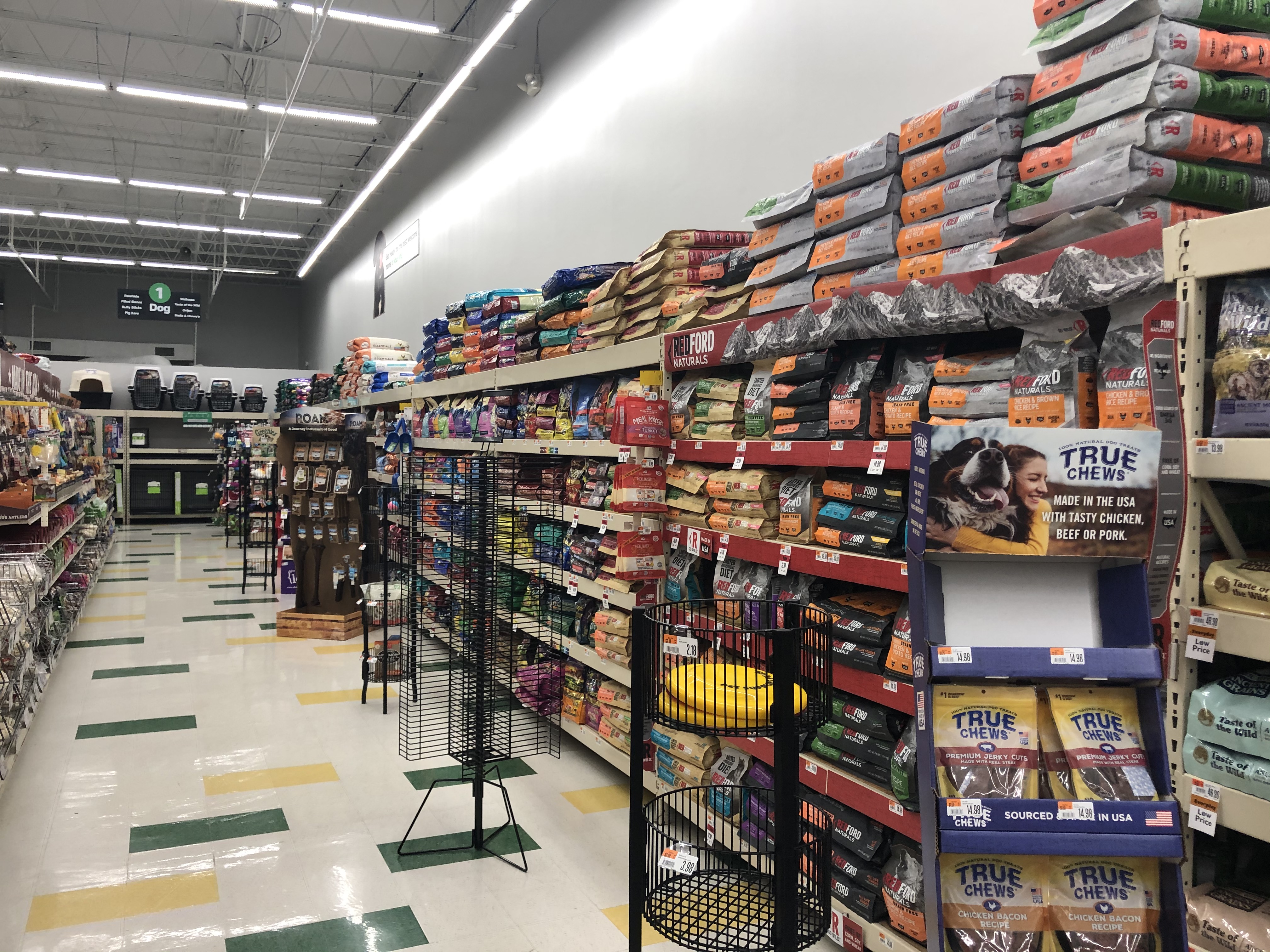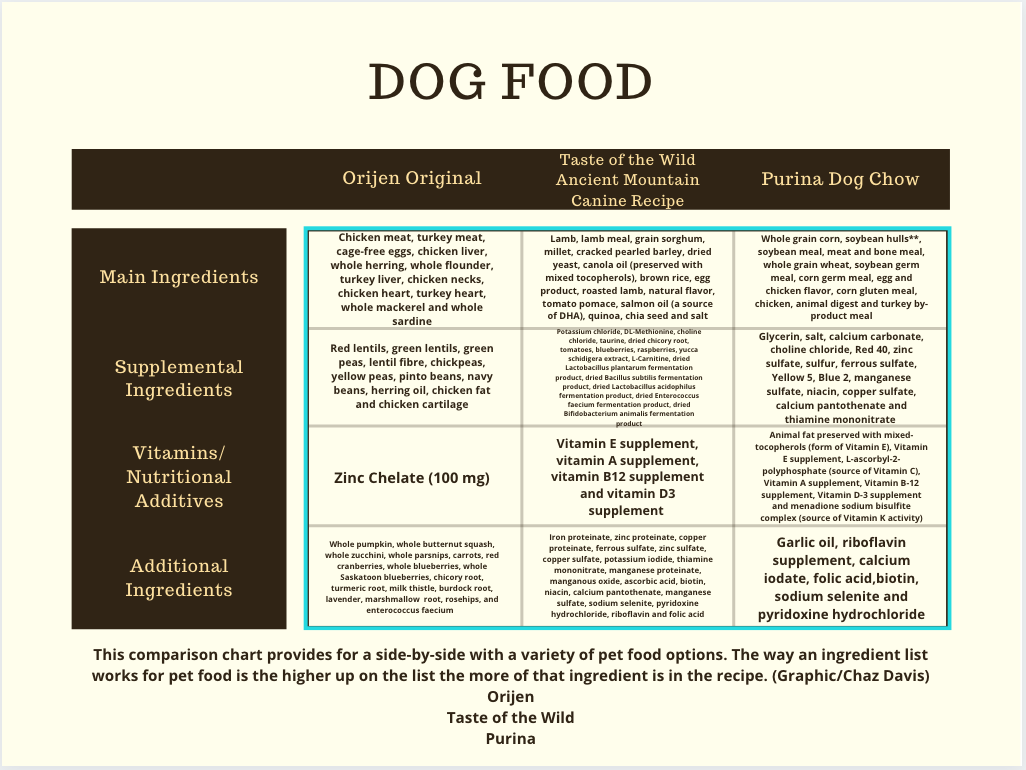Pet Supplies Plus in Athens, Georgia, has five aisles—all of them containing pet food. Three aisles for dogs, one for cats and the last dedicated to critter food such as reptiles, birds and small mammals.
“At our store, we have a select group of customers that want higher quality food, and that’s the food they use and their dogs are accustomed to it,” said Walker Glancy, a manager at Pet Supplies Plus. “And then there are a lot of people who come in asking, ‘What’s the cheapest dog food that you have?’”
Pet food was once a small market with limited options, as some were not as concerned about nutrition and ingredients. Times have changed, however, as have the amount of pets in our society today.
According to the 2017-2018 National Pet Owners Survey conducted by the American Pet Products Association (APPA), 68 percent of U.S. households, or about 85 million families own a pet. To put this in perspective, only 56 percent of U.S. households in 1988 owned a pet, which is a 12% growth in pet ownership over that period of time. In 2017, the pet industry generated $69.4 billion in the U.S. alone.
And, $31.1 billion of that was spent on pet food.
Why It’s Newsworthy: The greater Athens area has several pet stores, mainly made up of pet food, with the reputation of being an area with a love for domestic animals and therefore affected by the confusion that can come with the pet food industry—increased amounts of brands and makes.
The pet food industry is largely dominated by companies such as Purina, Mars Petcare and Hill’s. For example, Purina owns 20 dog brands and 13 cat brands alone, covering the full range of options from low- to high-tier ingredients. They offer some of the highest quality options sitting right next to some of the lowest quality on the aisles of pet stores across the country. They sell Purina Dog Chow, one of their cheapest options, and Purina ProPlan, a higher-quality option. Purina also offers Friskies for cats, which is comparable to Dog Chow in terms of quality.
“Purina is all over the store,” Glancy said. “Some of it is not super high quality.”
All of these options have become available as the amount of people owning pets, and their focus on nutrition for these pets, has increased greatly in the past few decades. The increase in market size and focus on healthy options has created space for more brands. The challenge is the more options, the more confusing it becomes for the general consumer to select the right pet food.
We have plenty who come in and are very concerned and confused. They’ve been looking and there are a lot of websites of recalls that have happened and issues with certain brands that may have come about,” Glancy said.
Child or Pet?
For University of Georgia student Christian Torres-Fields, feeding dogs was an everyday responsibility as his parents owned nine: seven pitbulls, one pitbull-lab mix and one beagle. Now Torres-Fields has been raising a 70-pound, blue-nose pitbull named Milly for the past two years.
“When I first got Milly, I was as poor as…a poor college student is, so I couldn’t afford to get her the best of the best,” Torres-Fields said.
Torres-Fields feeds Milly Authority brand dry food. He purchases a 34-38 pound bag of the chicken and rice formula for $40 every month on average. Authority would be considered to many as a middle-range option in regards to nutrition. Torres-Fields feels he is taking solid nutritional care of his dog, at least in comparison to what he fed his dogs growing up.
“At home, my stepdad has a dog named ‘Dog,’ so he doesn’t even have a name and it answers to ‘Dog,’ but they [my parents] also just get a 50-60 pound bag to feed him for $20. It’s just a pet to my dad. However, he is very healthy and happy. He has been living outdoors for eight years and has never spent a day inside,” Torres-Fields said.
Torres-Fields, though, has decided to treat his dog a little differently.
“Milly, for me, is like my everything, my daughter if you will. Her getting food and being able to use the restroom depends on me,” he said.
He even allows her to sleep on the bed with him and considers her an inside dog.
Nathaniel Walker, a student at the University of Georgia, has two dogs back home on his family’s farm in Hartwell, Georgia. They are both mutts—one named Herschel and the other Conley, both after former UGA football players. The two dogs stay outside and are fed Purina Dog Chow. Walker’s dogs are well-loved, shown by the two Fatheads on display in his bedroom or the picture that he keeps in his Jeep.

“Both my dogs are healthy and happy,” Walker said. “I consider them a part of the family. I just don’t see why we [my family] would spend more on food when they’re living just fine off Dog Chow.”
Market Confusion
Based on customers, even Glancy is a little skeptical of the market.
“A lot of people come in and they want Science Diet,” Glancy said. “This is apparently the most highly recommended food by vets.”
Hill’s Science Diet offers a wide variety of dietary food options for animals from sensitive skin and stomach for dogs to hairball control for cats. Glancy said that a lot of people who own pets with health issues will say their vet recommended the pet food.
“It’s like four or five vets in the area. Even though it’s supposedly highly recommended by vets, it’s not that great. Maybe it’s a corporate thing. Just for the price, it can’t be super great,” Glancy said.
This prescription diet market is run by—you guessed it—the same companies mentioned earlier: Purina, Hill’s and Mars Petcare, which owns IAMS and Royal Canin. These companies also make lower-quality foods, such as Dog Chow and Friskies.

So, the options can be confusing to the average pet owner. It even confuses the U.S. Food and Drug Administration, the ones who are supposed to be monitoring the market. The FDA recently released a non-conclusive study that has reshaped many consumers and their thoughts on what to feed their pet.
The study was about how grain-free foods are starting to be linked to heart diseases in certain dog breeds. There are a lot of grain-free foods and there are a lot of peas, legumes and alternate sources of protein that the FDA thought were fine, but now they may be potentially linked to dogs with heart diseases who originally weren’t predisposed to it, such as large dogs. Glancy said that because of this, there are grain-in options available and those are becoming more popular in stores at this point in time. The main issue is not with the grain, but rather the substitutes being used for the grain.
However, nothing is concrete and the FDA released this statement in June: “At this stage of the investigation, the FDA cannot attest to whether or how these case reports are linked to diet.”
“The test sample used a lot of dogs already predisposed to heart disease, and it wasn’t that big of a sample size anyway, but it’s still something being looked into by the FDA,” Glancy said.
As people may remain confused by the wide variety of options, Torres-Fields plans on continuing to feed his healthy dog the same as he has been for the last two years.
“If it ain’t broke, don’t fix it, he said.”
Chaz Davis is a senior majoring in journalism in the Grady College of Journalism and Mass Communication.









Show Comments (3)
shahan malik
This is a great look at how the pet food industry has evolved over time. The fact that pet food options have expanded so much is a reflection of the growing pet market. It’s fascinating how pet ownership has increased over the years, with 68% of U.S. households now having a pet compared to just 56% in 1988. This surge in pet ownership has directly impacted the pet food industry, driving up spending to billions of dollars annually.Levelup
The quote from Walker Glancy highlights the shift in consumer priorities—while some pet owners seek higher-quality food for their pets, others are more focused on affordability. This contrast speaks to the diverse needs and preferences among pet owners. With so many brands and types of pet food on the market today, it’s no wonder the industry can be overwhelming for both new and experienced pet owners. This growing market certainly reflects how deeply embedded pets have become in our lives!
Angela@catfood
We should be very careful to select the pet food for its healthy life.
Julia@catfood
We should be very careful to select the pet food for its healthy life.